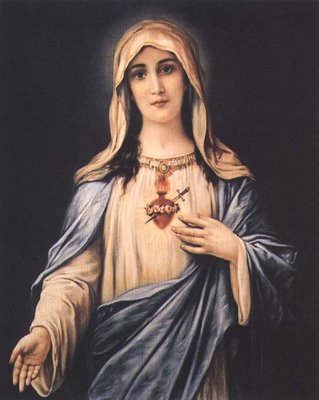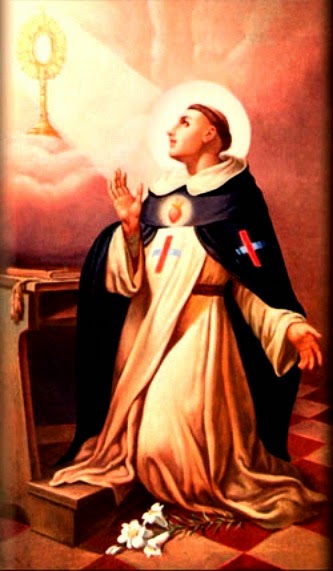The Feast of Our Lady of Sorrows
 The feast of Our Lady of Sorrows commemorates the seven great sorrows which Mary lived in relation to Her Son, as they are recorded in the Gospels or through Tradition. Today we are invited to reflect on Mary's deep suffering:
The feast of Our Lady of Sorrows commemorates the seven great sorrows which Mary lived in relation to Her Son, as they are recorded in the Gospels or through Tradition. Today we are invited to reflect on Mary's deep suffering:1. At the prophecy of Simeon: "You yourself shall be pierced with a sword - so that the thoughts of many hearts may be laid bare." (Luke, 2:35).
2. At the flight into Egypt; "Get up, take the child and his mother, and flee to Egypt." (Matt. 2:13).
3. Having lost the Holy Child at Jerusalem; "You see that your father and I have been searching for you in sorrow." (Luke 2:48).
4. Meeting Jesus on his way to Calvary;
5. Standing at the foot of the Cross; "Near the cross of Jesus there stood His mother." (John, 19:25).
6. Jesus being taken from the Cross
7. At the burial of Christ.
Prior to the Second Vatican Council there were two feasts devoted to the sorrows of Mary. The first feast was instituted in Cologne in 1413 as an expiation for the sins of the iconoclast Hussites. The second is attributed to the Servite order whose principal devotion is the Seven Sorrows. It was instituted in 1668, though the devotion had been in existence since 1239 - five years after the founding of the order.
Source
PRAYER TO OUR LADY OF SORROWS
O most holy Virgin, Mother of our Lord Jesus Christ: by the overwhelming grief you experienced when you witnessed the martyrdom, the crucifixion, and the death of your divine Son, look upon me with eyes of compassion, and awaken in my heart a tender commiseration for those sufferings, as well as a sincere detestation of my sins, in order that, being disengaged from all undue affection for the passing joys of this earth, I may sigh after the eternal Jerusalem, and that henceforward all my thoughts and all my actions may be directed towards this one most desirable object. Honor, glory, and love to our divine Lord Jesus, and to the holy and immaculate Mother of God. Amen.
~Saint Bonaventure




Comments
Post a Comment
Comments are moderated and are published at the blogger's discretion.